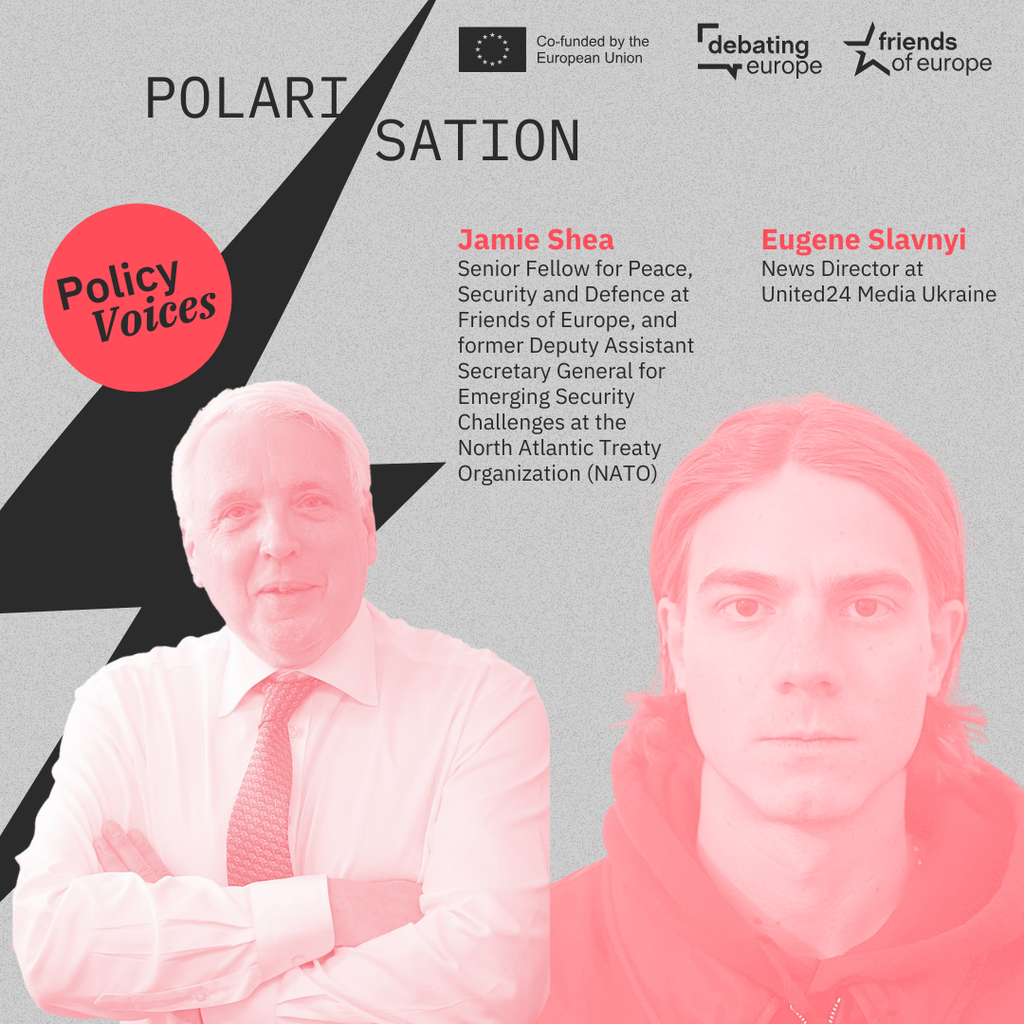From ambition to action: building Europe’s Defence Union
Past event In person

- Area of Expertise
- Peace, Security & Defence
Peace, Security & Defence

Executive Director of the Fundación Ideas para la Paz, Colombia

Director of the Postconflict and Peacebuilding programme at the Fundación Ideas para la Paz
Colombia is a 21st century miracle. In less than twenty years our country has gone from failed state to beginning its accession process to the OECD. In that period our homicide rate per 100,000 people was reduced from 66 to 24, while multidimensional poverty fell from 30.4% to 17.8% and unemployment decreased from 16.9% to 9.7%. Today it serves as a laboratory for public policies on the nexus between security, development and peace.
Throughout this transition the Colombian authorities have had to deal with considerable security challenges. The internal armed conflict between the state, the FARC guerrilla movement and extreme right-wing paramilitaries claimed more than eight million direct victims over the last thirty years. Organised crime is also a problem: Colombia continues to be the world’s main cocaine producer, and the criminal exploitation of gold has had devastating environmental effects, in addition to its humanitarian impacts. The FARC was an active force in a quarter of Colombia’s municipalities, and its departure has led to the reconfiguration of guerrilla strongholds and criminal organisations. These groups are the driving forces behind illicit economies in many regions, a situation which is both a cause and a consequence of the state weakness at the local level and which represents a huge challenge to territorial peace.
Meanwhile, significant development challenges include a lack of universal education and healthcare provision, highly unequal wealth distribution and deficient infrastructure. These features are aggravated in rural areas where unresolved issues related to land tenure, distribution and use have been a source of violence and ongoing social tensions. Added to this is the country’s excessive dependence on the export of basic goods and income from the mining and energy sectors for state financing.
Tackling security and development issues has proved very difficult in territories dominated by armed conflict and criminal activities. However, recent governments have acknowledged the inextricable link between the two areas. At the beginning of the 21st century the state emphasised security measures, seeing security as the necessary condition for investor confidence from which development would flow naturally. According to this view, the state’s responsibility is primarily to foster a threat-free scenario, eradicating insurgency, and encouraging private capital to find new business opportunities in traditionally excluded areas.
For the regions most in need neither the improvement in security conditions nor the incentives for capital investments were able to unleash virtuous circuits of development and peace
As a result, Colombia improved and modernised its police and armed forces. It strengthened its intelligence services and its ability to carry out joint military operations, enhanced its air weapons and, after great military and police efforts, cornered the guerrillas. In parallel, it contained the production and trafficking of narcotics and managed to partially dismantle the paramilitary groups, gaining control of many territories that had been under the influence of illegal armed groups.
But for the regions most in need neither the improvement in security conditions nor the incentives for capital investments were able to unleash virtuous circuits of development and peace. In fact, in many of these regions conflict, protest and social unrest have become more acute.
From our point of view, a fundamental part of the success of post-conflict reconstruction lies in the capacity to design and implement comprehensive policies that effectively combine efforts to ensure safe environments with measures to generate decent and productive living conditions. It is in this intersection between security and development that the heart of peace lies.
One case is that of illicit crops, a problem exacerbated by the existence of vast areas of Colombian territory far from the public goods and services provided by the State and with very few possibilities of effective insertion into legal markets. In recent years, national and international alarms have been ignited by a significant increase in Colombia’s cultivated area of coca up to 146,000 hectares, similar to levels of fifteen years ago.
Among the reasons for this boom are the international fall in gold prices and the simultaneous rise in the price of the dollar, which once again tilted the balance of illegal markets to the cocaine business. It also reflects the ability of coca growers to adapt to the state’s eradication strategies and their expectations of receiving benefits from the crop substitution programmes provided for in the FARC agreements.
The illicit crop problem is a clear example of how an exclusively security-based approach, while indispensable for generating behavioural incentives, has a very limited transformational capacity in the medium term. For years Colombia has invested enormous efforts and resources in the aerial spraying of more than one-and-a-half million hectares and in the criminalisation of cultivators and gatherers. This has not led to a substantial change and, on the contrary, has taken an enormous toll on the legitimacy of the state.
It is the combination and consistency of security and development measures that can reverse the cycles of violence
Likewise, socio-economic development programmes that are detached from security strategies have yielded very poor results. A programme of direct subsidies to coca farmers ignored the fact that the criminal actors who dominate the cocaine chain exert their influence through extortion, corruption and violence, and without a consistent security strategy to accompany development measures the effective transformation of territorial conditions will be nothing more than an illusion.
It is the combination and consistency of security and development measures that can reverse the cycles of violence: the fundamental question that remains is how these measures should be sequenced. One case that could provide an answer is the Comprehensive Consolidation Plan of the Macarena, a serrania (mountainous area) located in the south of Colombia that was a FARC sanctuary with high levels of coca production. Here, between 2007 and 2008, the Colombian state designed an approach that began with the military takeover, was followed by the establishment of police and judicial order, and ended with social action by the state.
This plan, which also had a permanent component of citizen participation to accompany decision-making, reduced illicit crops, strengthened the legitimacy of the state and began a process of territorial transformation. Unfortunately this effort, which was replicated without success in more than ten regions of the country, did not receive continuous support from the authorities, demonstrating that the coordination of security and development policies requires leadership with a long-term strategic vision.
Today, Colombia is going through a crucial moment. After signing the agreement to end the conflict with the FARC, security threats are being reconfigured in regions undergoing post-conflict transition. Meanwhile, there is an ongoing necessity for a development model with a territorial approach that provides opportunities for those who have historically been excluded.
This article is from Friends of Europe’s upcoming discussion paper ‘Investing in People, Peace and Prosperity‘, in which international experts in these fields consider how policymakers can address the security-development nexus to build peaceful and inclusive societies. This discussion paper complements the Friends of Europe Policy Insight debate ‘To achieve Agenda 2030, give peace a chance’, held as part of the 2017 European Development Days.
Past event In person

Next event

Past event Online

Past event Online





Stay informed
We use cookies and similar technologies to adjust your preferences, analyze traffic and measure the effectiveness of our campaigns. Learn more about our privacy policy.